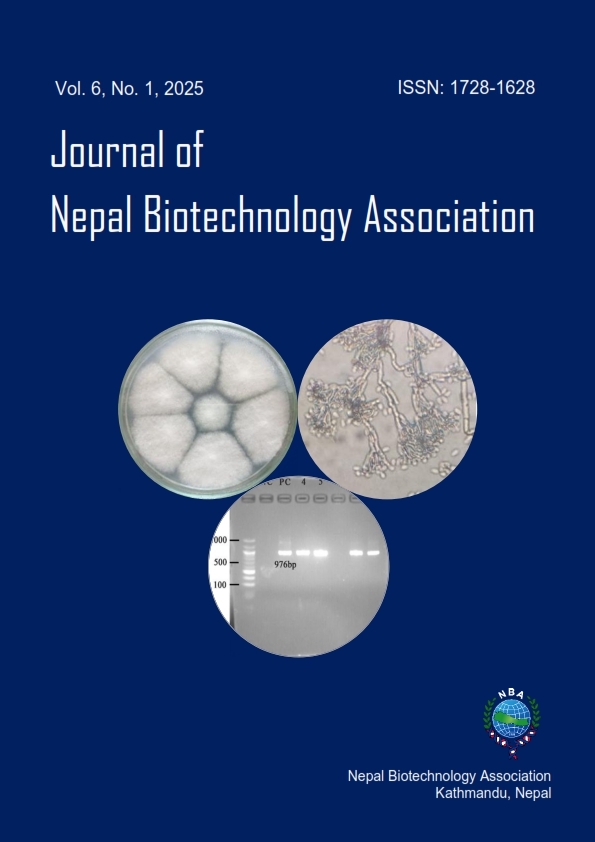Isolation and Purification of L-Asparaginase Producing Endophytic Fungi from Ocimum tenuiflorum L.
DOI:
https://doi.org/10.3126/jnba.v6i1.76913Keywords:
Endophyte, L-asparaginase, Nesslerization, Ocimum tenuiflorumAbstract
Endophytic fungi are essential sources of bioactive chemicals and enzymes. L-asparaginase is a key enzyme used in the treatment of acute lymphoblastic leukemia and lymphoblastic lymphoma. However, the usage of commercial L-asparaginase generated from prokaryotes is limited due to severe clinical hypersensitivity. Studies showed that L-asparaginase from eukaryotic sources can significantly reduce allergy reactions. Thus, nowadays, researchers are looking for eukaryotic sources to manufacture L-asparaginase. This work isolated and purified four endophytic fungi known as (Tulsi 'a', 'b', 'c', and ’d’) from the leaf tissue of Ocimum tenuiflorum (Holy Basil). Morphological analysis revealed Tulsi ‘b’ corresponds to Microsporum sp., Tulsi ‘c’ corresponds to Penicillium sp., while Tulsi ‘d’ corresponds to Trichoderma sp. Tulsi 'a' did not produce spores so morphological identification of Tulsi 'a' was done. Screening for L-asparaginase biosynthesis on modified Czapek Dox (MCDox) medium showed varying activity: Tulsi ‘b’ and ‘c’ exhibited a faint pink hue (pH-dependent), but Tulsi ‘a’ and ‘d’ caused the medium to turn yellow. Submerged fermentation followed by nesslerization method was used to measure the concentration of ammonia formed. One unit of asparaginase catalyzes the formation of 1 mM of ammonia per minute. So, amount of ammonia in the sample gives enzyme activity. Tulsi ‘a’ demonstrated the maximum activity (31.24 U/ml) on day 5, while Tulsi ‘d’ reached its peak on day 16 (77.43 U/ml). Temporal variations in activity indicate phase-dependent enzyme synthesis. These findings highlighted the potential of endophytic fungi from O. tenuiflorum as a source of L-asparaginase could serve as an alternative to bacterial-derived enzymes in medical and industrial applications.
Downloads
Downloads
Published
How to Cite
Issue
Section
License
Copyright (c) 2025 Nepal Biotechnology Association, Kathmandu, Nepal

This work is licensed under a Creative Commons Attribution-NonCommercial-NoDerivatives 4.0 International License.




